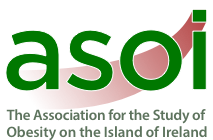Restoration of adipose function in obese glucose-tolerant men following pioglitazone treatment is associated with CCAAT enhancer-binding protein beta up-regulation
- Categories: Basic Science, Medications, Metabolic Health
Type Article
Journal Article
Authors
L. A. Powell; P. Crowe; C. Kankara; J. McPeake; D. R. McCance; I. S. Young; E. R. Trimble; A. McGinty
Year of publication
2012
Publication/Journal
Clinical science
Volume
123
Issue
3
Pages
135‐146
Abstract
Obese AT (adipose tissue) exhibits increased macrophage number. Pro‐inflammatory CD16+ peripheral monocyte numbers are also reported to increase with obesity. The present study was undertaken to simultaneously investigate obesity‐associated changes in CD16+ monocytes and ATMs (AT macrophages). In addition, a pilot randomized placebo controlled trial using the PPAR (peroxisome‐proliferator‐activated receptor) agonists, pioglitazone and fenofibrate was performed to determine their effects on CD14+/CD16+ monocytes, ATM and cardiometabolic and adipose dysfunction indices. Obese glucose‐tolerant men (n=28) were randomized to placebo, pioglitazone (30 mg/day) and fenofibrate (160 mg/day) for 12 weeks. A blood sample was taken to assess levels of serum inflammatory markers and circulating CD14+/CD16+ monocyte levels via flow cytometry. A subcutaneous AT biopsy was performed to determine adipocyte cell surface and ATM number, the latter was determined via assessment of CD68 expression by IHC (immunohistochemistry) and real‐time PCR. Subcutaneous AT mRNA expression of CEBPbeta (CCAAT enhancer‐binding protein beta), SREBP1c (sterol‐regulatory‐element‐binding protein 1c), PPAR 2, IRS‐1 (insulin receptor substrate‐1), GLUT4 (glucose transporter type 4) and TNFalpha (tumour necrosis factor alpha) were also assessed. Comparisons were made between obese and lean controls (n=16) at baseline, and pre‐ and post‐PPAR agonist treatment. Obese individuals had significantly increased adipocyte cell surface, percentage CD14+/CD16+ monocyte numbers and ATM number (all P=0.0001). Additionally, serum TNF‐alpha levels were significantly elevated (P=0.017) and adiponectin levels reduced (total: P=0.0001; high: P=0.022) with obesity. ATM number and percentage of CD14+/CD16+ monocytes correlated significantly (P=0.05). Pioglitazone improved adiponectin levels significantly (P=0.0001), and resulted in the further significant enlargement of adipocytes (P=0.05), without effect on the percentage CD14+/CD16+ or ATM number. Pioglitazone treatment also significantly increased subcutaneous AT expression of CEBPbeta mRNA. The finding that improvements in obesity‐associated insulin resistance following pioglitazone were associated with increased adipocyte cell surface and systemic adiponectin levels, supports the centrality of AT to the cardiometabolic derangement underlying the development of T2D (Type 2 diabetes) and CVD (cardiovascular disease). The Authors Journal compilation 2012 Biochemical Society.
